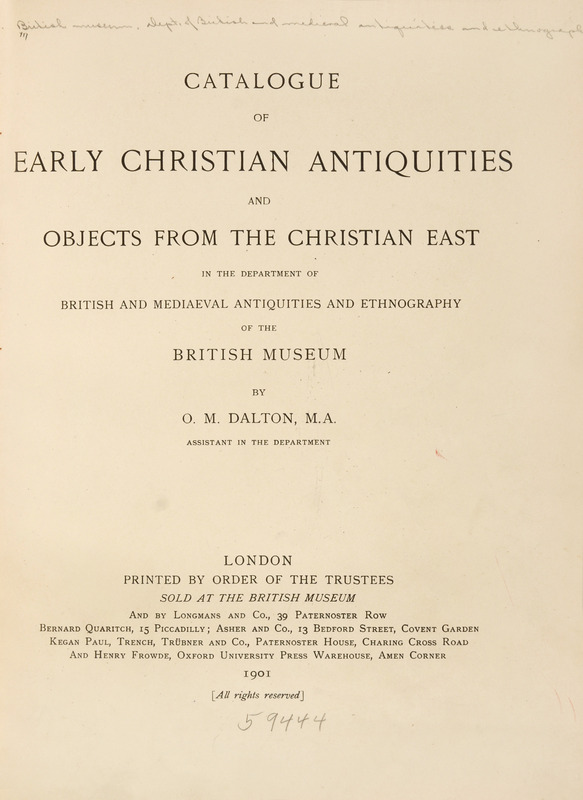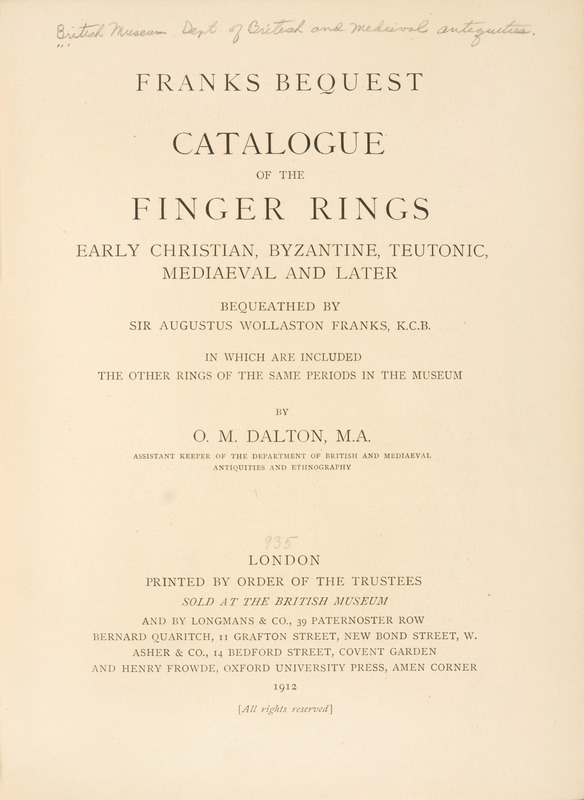Art Historians and Artists
Sir Augustus Wollaston Franks (1826-1897) was perhaps the most influential medievalist in 19th-century Britain and among those that gave Byzantine minor arts their due. Well-educated and passionate about archaeology, he was a founding member of the Cambridge Archaeological Society and an active member of the Antiquarian Society. In 1850, as an officer for the Royal Archaeological Institute, he oversaw the medieval components in the Great Exhibition in London. The next year, he was appointed to the British Museum with special responsibility for the British and medieval antiquities. He built the museum’s collection of medieval antiquities from basically nothing to one of the foremost collections in the world. Most of the British Museum’s post-Classical holdings were acquired during his long tenure (retired 1896). Upon his death, the museum received his personal collection.
Among Franks’ subordinates and successors was Ormonde M. Dalton (1866-1945). He inherited the responsibility for publishing a catalog of the museum’s early Christian and Byzantine antiquities. In the introduction to the 1901 catalog, Dalton complains that the study and understanding of Byzantine minor arts was still not very advanced. Later, his own research and publications (for example, no. 7) would help to fill that lacuna, as he became one of the leading Byzantine art historians of the early twentieth century. He oversaw the catalog of the Franks’ Bequest.


